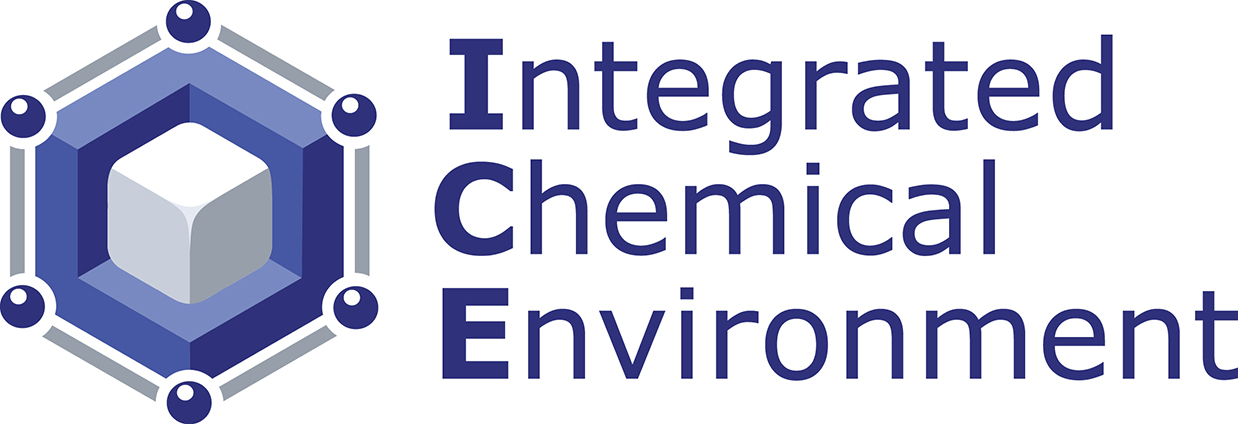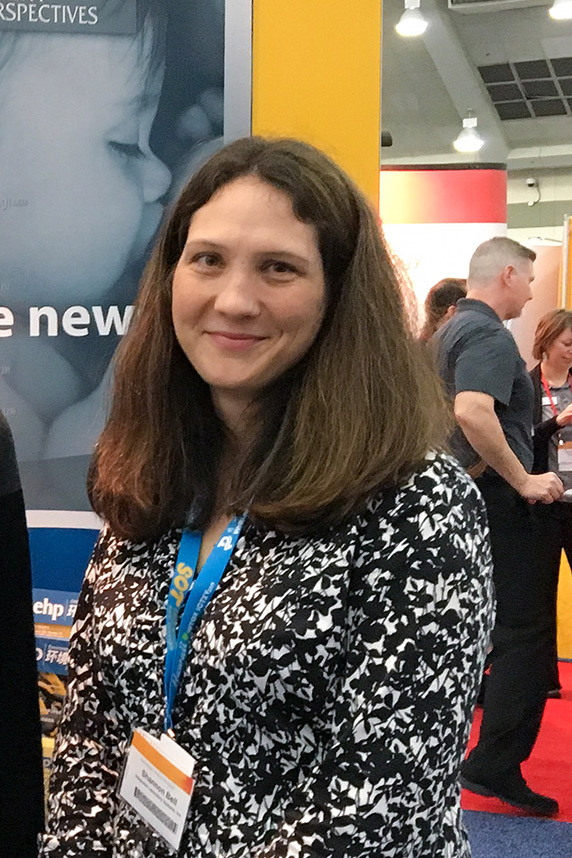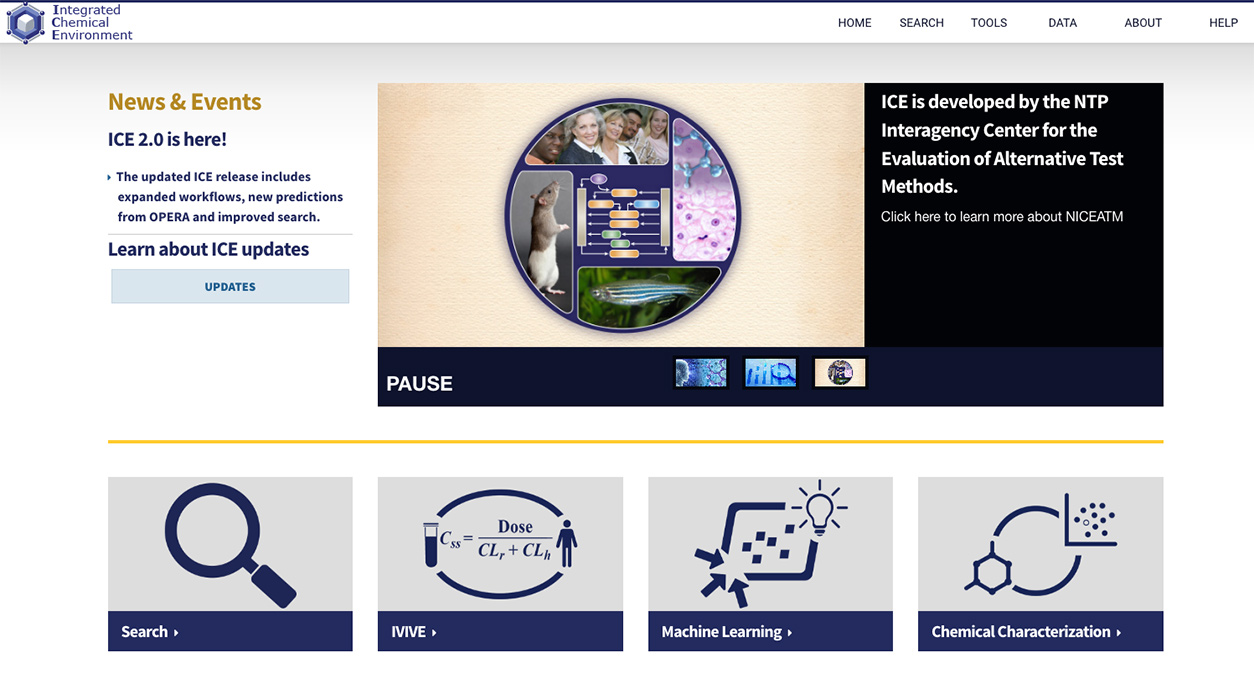On May 20, the National Toxicology Program (NTP) released a major update of its Integrated Chemical Environment (ICE) resource. ICE provides data and tools to help develop, assess, and interpret chemical safety tests.
“This update provides a new user interface to simplify searches,” noted Nicole Kleinstreuer, Ph.D., deputy director of the NTP Interagency Center for the Evaluation of Alternative Toxicological Methods (NICEATM). “We’re also providing new tools that will let users explore chemical properties and toxicity in more detail.”

New home page has a familiar look
NICEATM first released ICE in 2017 to serve individuals interested in chemical safety testing for regulatory applications. Typical users include scientists who develop in vitro or computational methods for predicting chemical toxicity, investigate mechanisms of toxicity, or use toxicity data to establish workplace and environmental exposure limits for chemicals.
 Bell and others from NTP demonstrated ICE at the 2019 Society of Toxicology meeting. (Photo courtesy of Hui Hu)
Bell and others from NTP demonstrated ICE at the 2019 Society of Toxicology meeting. (Photo courtesy of Hui Hu)“The new ICE home page provides users easy access to all the tools within ICE, as well as user guides and related information,” explained Shannon Bell, Ph.D., from ILS, a contractor to NTP. She leads the ICE project team for NICEATM. The page will look familiar to users of the NTP website, because it has the same layout.
Simplified data search
ICE provides a search tool that allows users to explore data on thousands of chemicals, collected from oral toxicity, skin sensitization, eye irritation, and other tests.
The update includes a new module to simplify selection of the best assay. Another new feature allows users to add chemicals with the same core structure, such as different salt forms, to their search. This feature expands the relevant toxicity data returned from the search.
Tools predict toxicity
 Kleinstreuer is a recognized expert in computational toxicology. (Photo courtesy of Steve McCaw)
Kleinstreuer is a recognized expert in computational toxicology. (Photo courtesy of Steve McCaw)In addition to searching, ICE provides three other tools that explore chemical properties, test performance, and toxicity predictions.
The in vitro to in vivo extrapolation (IVIVE) tool uses data from high-throughput screening assays to predict potentially toxic doses for animals. Scientists can use these analyses to prioritize chemicals for future testing. The new updated IVIVE tool provides more complex models, including those from the U.S. Environmental Protection Agency’s httk package, to improve prediction accuracy.
The ICE machine learning tool allows users to explore how combinations of nonanimal tests compare to animal tests when assessing toxicity.
The chemical characterization tool provides a graphical interface for exploring the properties of a set of chemicals, or comparing the properties of two sets of chemicals.
NICEATM will release videos later this year to provide tutorials for the search interface, IVIVE, and other tools.
(Catherine Sprankle, NICEATM Communications Specialist, works for ILS, the contractor supporting NICEATM.)

ICE includes in vivo, in vitro, and in silico data from NICEATM and partners, curated and formatted to support exploration and use in computational workflows. It provides reference chemical lists, as well as computational tools and workflows. (Image courtesy of NTP)









